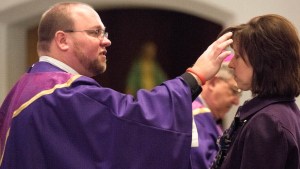In the Roman Rite of the Catholic Church, the season of Lent begins with the celebration of Ash Wednesday. It is a day when many flock to their local parishes to receive ashes on their forehead.
To help explain the many spiritual levels of Ash Wednesday, here is a simple guide that explains the basics.
Ash Wednesday is an ancient liturgical feast with biblical roots.
The earliest celebration of Ash Wednesday dates to the 8th century and may have come from an earlier tradition of penitents placing ashes on themselves in atonement for their sins.
The Bible has numerous examples of this type of practice, such as Job, who said, “[I] repent in dust and ashes” (Job 42:6).
Easter is 46 days after Ash Wednesday.
The six Sundays in Lent are not considered part of the official “Lenten fast” (every Sunday is a special remembrance of the Resurrection of Christ), and so if you subtract six from 46, you get the famous 40 days of Lent.
It is a day of fasting and abstinence.
According to the USCCB, the following rules are in force for those between the ages of 18 and 59.
Fasting on these days means we can have only one full, meatless meal. Some food can be taken at the other regular meal times if necessary, but combined they should be less than a full meal. Liquids are allowed at any time, but no solid food should be consumed between meals.
The ashes have deep spiritual meaning.
St. John Paul II perfectly summarizes the depth of meaning behind the ashes.
“Create in me a clean heart, O God, … take not your holy Spirit from me.” We hear this plea echoing in our hearts, while in a few moments we will approach the Lord’s altar to receive ashes on our forehead in accordance with a very ancient tradition. This act is filled with spiritual allusions and is an important sign of conversion and inner renewal. Considered in itself, it is a simple liturgical rite, but very profound because of its penitential meaning: with it the Church reminds man, believer and sinner, of his weakness in the face of evil and especially of his total dependence on God’s infinite majesty.

Read more:
Lent is coming: Here’s what you need to know

Read more:
4 Lenten traditions from your Polish grandma

